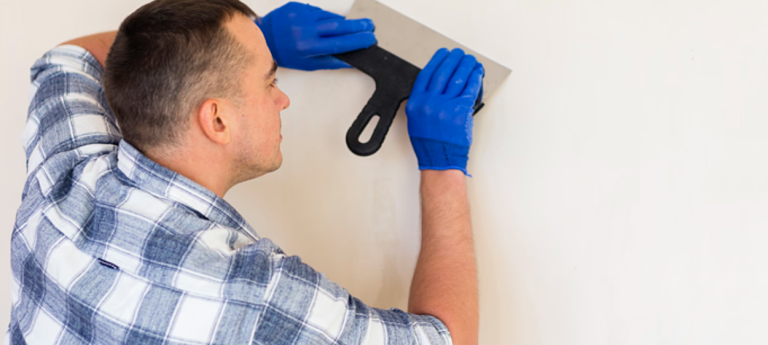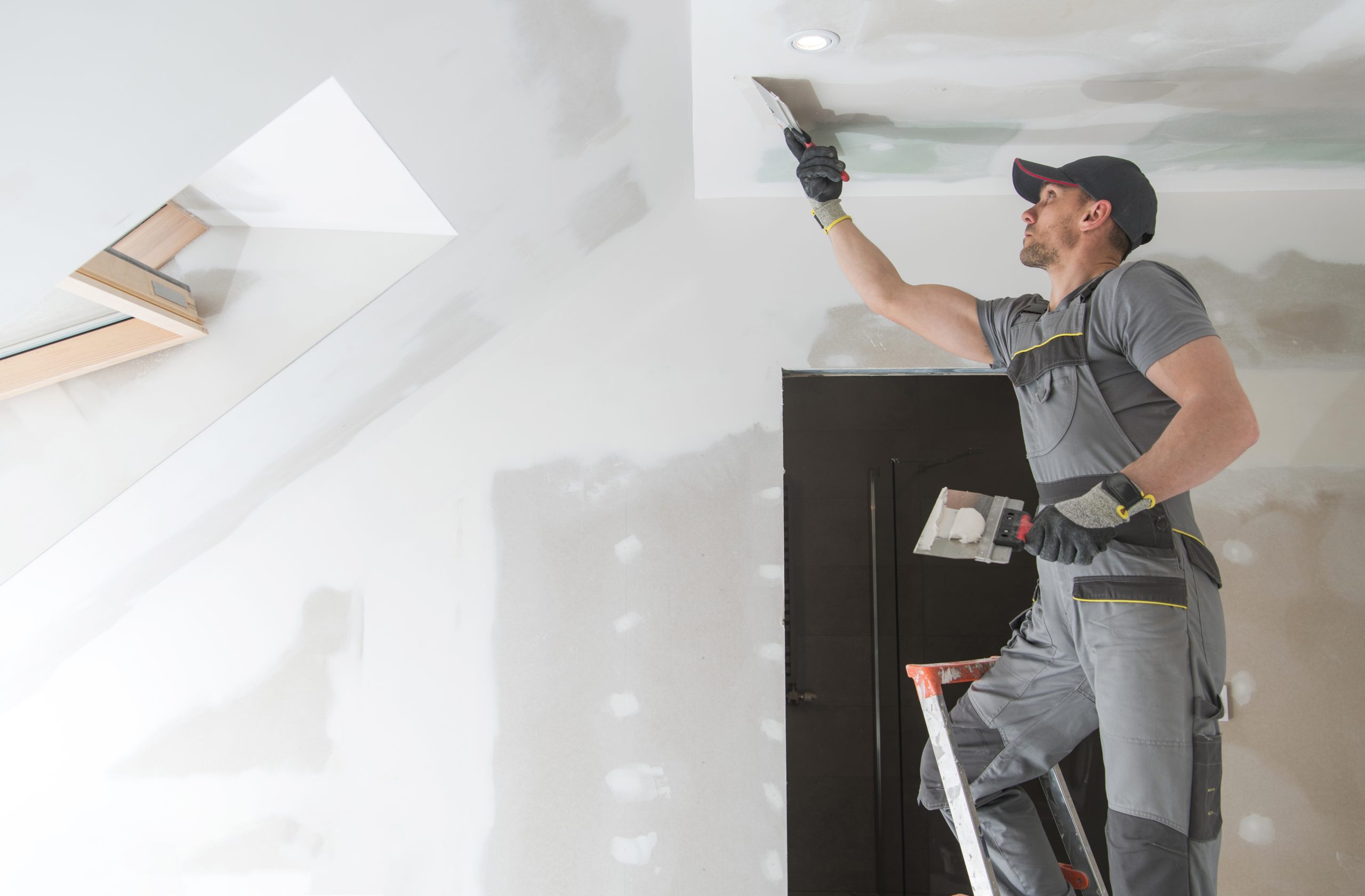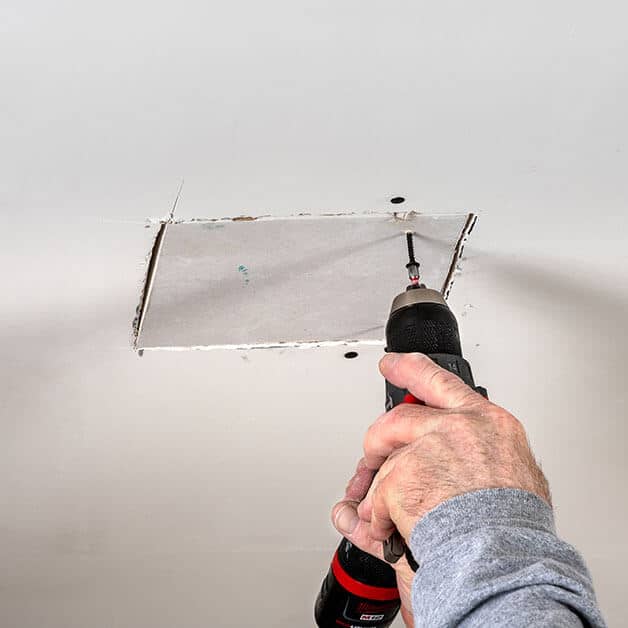Discover the most effective Practices for Successful Drywall Repair Service and Installation
The art of drywall repair service and installment needs a mix of skill and accuracy. Understanding the vital tools is important for attaining a smooth finish. Understanding the detailed process can make a considerable difference in the outcome. Correct strategies for taping and mudding are also essential. What continues to be is the knowledge of upkeep that assures durability. These aspects together produce a polished result worth checking out even more.

Important Tools for Drywall Fixing and Installation
When carrying out drywall repair work and installation, having the right devices can substantially improve the performance and high quality of the work. An energy blade is vital for cutting drywall sheets precisely, while a drywall saw can aid in making much more elaborate cuts. Taping knives, available in various dimensions, are important for using joint substance smoothly and equally. A drywall sander, ideally with a dust collection attribute, assists achieve a refined finish, lowering the need for substantial cleaning.
In addition, a determining tape assurances precise dimensions, and a degree makes certain that installations are straight and plumb. Security gear, including dust masks and goggles, should not be overlooked to protect versus debris and dirt. A stud finder aids in finding framing participants, ensuring protected installment. By furnishing oneself with these necessary tools, the repair service and installment process comes to be a lot more manageable and leads to a professional-quality outcome.

Step-by-Step Guide to Patching Holes
Covering holes in drywall requires an organized strategy to guarantee a smooth repair work. The area around the hole should be cleansed and any loosened debris got rid of. For tiny holes, a putty knife can be utilized to use a lightweight spackle, pressing it right into the opening and smoothing the surface. After it dries, fining sand is vital to produce a flat finish. For larger openings, a patch of drywall may be necessary. This entails reducing an item of drywall somewhat bigger than the opening, protecting it to the wall with screws, and utilizing joint substance to cover the seams. Once the compound dries, it needs to be sanded smooth. Topping the patched location prior to paint will certainly ensure an even coating. Complying with these steps will certainly lead to a professional-looking repair work that blends flawlessly with the surrounding wall surface.
Techniques for Smooth Drywall Setup
Accomplishing seamless drywall installment demands cautious planning and execution. Initially, it is important to reduce and gauge drywall sheets accurately to decrease voids. Making use of an energy blade, installers need to score the board before breaking it along the cut line, ensuring tidy edges. Appropriately straightening the sheets is vital; beginning with the leading and working down helps keep harmony.
Attaching drywall to the studs calls for consistent spacing, commonly every 16 inches, making use of screws instead of nails for much better hold. This approach minimizes the risk of pops gradually. Furthermore, staggering the joints in between sheets boosts structural honesty and minimizes the presence of joints.
Ultimately, using the best thickness of drywall for specific areas-- such as moisture-resistant types in washrooms-- more adds to a remarkable coating. Complying with these methods will cause a smooth and professional-looking installation, establishing the more information stage for the subsequent ending up procedures.
Ending Up Touches: Taping and Mudding
Completing touches, such as taping and mudding, play an essential role in attaining a sleek drywall surface. Taping involves using a slim strip of drywall tape over the joints and seams, making sure a smooth appearance. This process assists stop splits and develops a solid bond in between drywall sheets. It is important to pick the best kind of tape, with paper and fiberglass mesh being the most usual choices.
Mudding, or applying joint compound, follows taping. This compound fills up in spaces and smooths out the surface for a consistent finish. It is generally applied in multiple layers, with each coat needing to completely dry prior to sanding. Proper strategy includes feathering the sides to blend the compound into the surrounding drywall, reducing presence.
When completed appropriately, taping and mudding improve both the visual and architectural stability of the drywall installation, resulting in a professional-quality coating.
Tips for Maintaining Your Drywall After Installation

Furthermore, keeping a constant indoor moisture degree can click avoid bending or mold development. Making use of a dehumidifier in damp areas, like basements, is advisable. It's also helpful to regularly repaint areas that show wear, as this secures the underlying material. When moving furnishings or mounting components, caution must be worked out to prevent damaging the drywall. By following these upkeep tips, home owners can prolong the life of their drywall, securing it continues to be an attractive attribute of their insides.
Frequently Asked Questions
What Security Equipment Is Essential for Drywall Fixing and Installment?
For drywall repair and installment, vital safety gear consists of security goggles to protect eyes, dirt masks to avoid breathing of particles, gloves for hand protection, and knee pads for convenience during prolonged kneeling. Drywall Repair Ogden UT.
How Do I Determine the Drywall Thickness Needed for My Job?
To figure out the drywall thickness needed for a project, one ought to consider the wall surface's structural needs, neighborhood building ordinance, and the planned use of the space, normally going with 5/8-inch or 1/2-inch drywall.
Can I Fix Drywall Without Removing Furnishings From the Room?
Yes, drywall can be fixed without removing furnishings from the room. Mindful planning and protective actions can reduce mess, enabling for efficient repair work while maintaining surrounding products safe from dirt and damage throughout the process.
What Types of Drywall Are Finest for Various Settings?
Moisture-resistant drywall is perfect for kitchen areas and bathrooms, while soundproof drywall suits shared wall surfaces in homes. Fire-rated drywall is best for garages, and basic drywall functions well generally living areas, ensuring sturdiness and viability for various settings.
Just how Lengthy Does It Take for Drywall Mud to Dry Entirely?
Drywall mud generally takes 24 to 48 hours to completely dry entirely, depending on factors like humidity and temperature (drywall contractor). Thicker applications might require longer drying out times, while thinner layers can dry faster. Appropriate ventilation help drying out
The art of drywall repair you can try this out service and setup requires a mix of ability and precision. When undertaking drywall repair work and setup, having the right tools can substantially improve the efficiency and top quality of the job. An utility blade is crucial for cutting drywall sheets exactly, while a drywall saw can assist in making a lot more complex cuts. Attaining seamless drywall setup demands careful planning and execution. Moisture-resistant drywall is ideal for bathrooms and cooking areas, while soundproof drywall suits shared walls in houses.